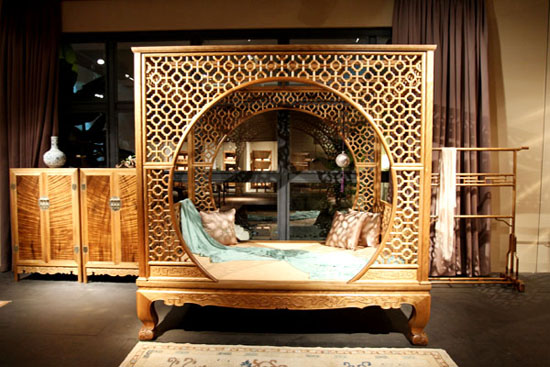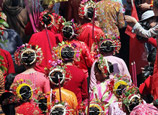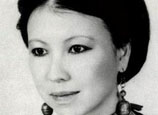
 |
| A latticed boudoir bed flaunts intricately repetitive flower patterns made using mortise-and-tenon joints. (China Daily) |
"To a child like me, it was a symbol, an essential part of a ritual," Mi recalls. "And I asked my father: 'Why wood? Maybe we could use something else, like a cotton-stuffed real pillow?'"
His answer was brief, but it took Mi the rest of his life to decipher the words.
"Wood cultivates people", his father had said.
Shouldn't it be the other way round, Mi had thought at the time. The question remained in Mi's head as extensive travels around the country drew him deeper and deeper into the study of wood, much like the concentric swirls that marks a tree's core.
"For the Chinese, wood represents two things: constancy in the face of a fickle world, and gentleness bestowed by age," says Mi.
As proof, he points to Beijing's Forbidden City, the site of the royal palaces and the seat of power for nearly half a millennium. This is where every pillar and chair is a marvelously constructed wooden wonder that once spoke well of an everlasting and benign rule.
"On another level, the qualities believed embodied in wood are exactly the ones traditional culture valued - a steadfast inner depth and a suave exterior," Mi says.




















![]()
